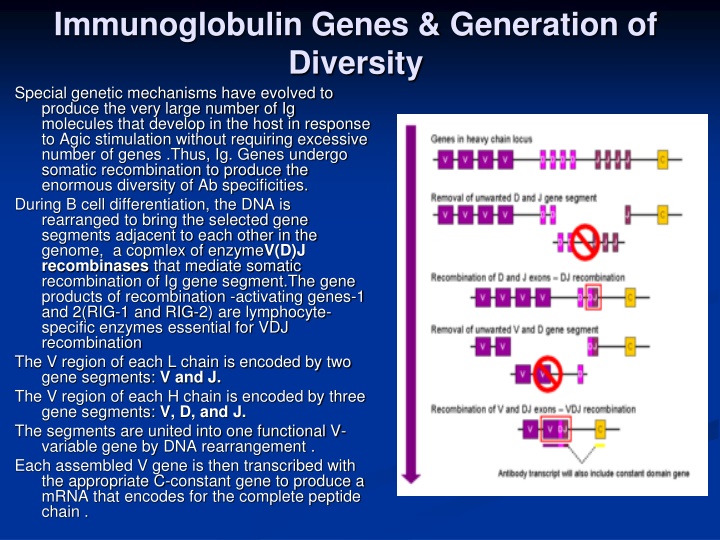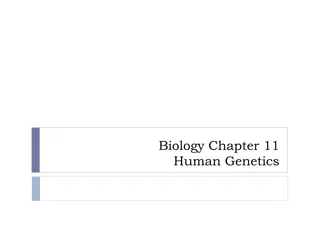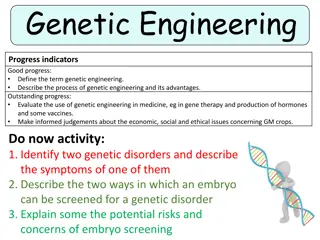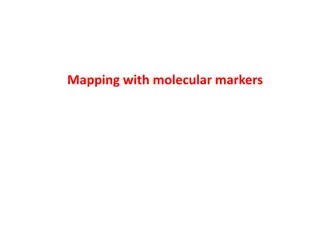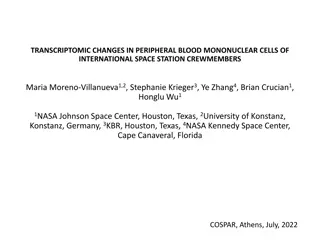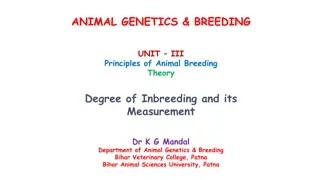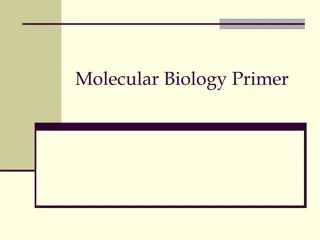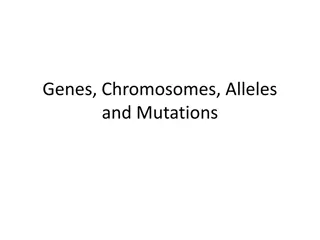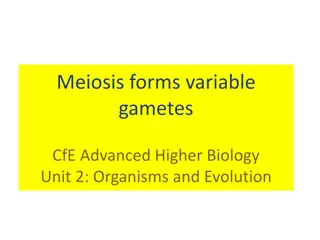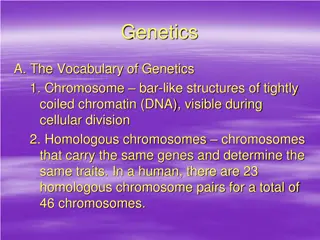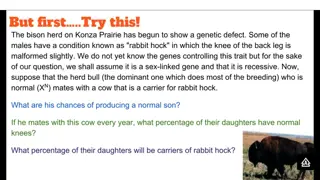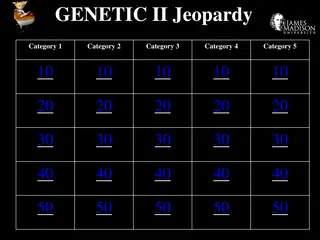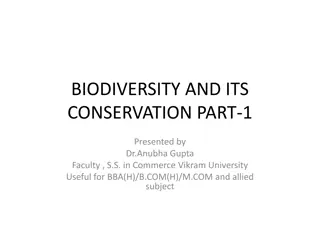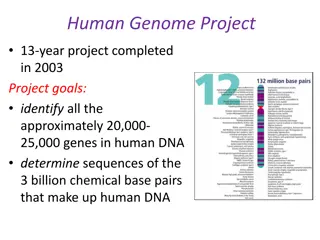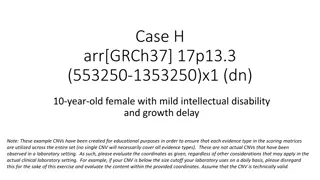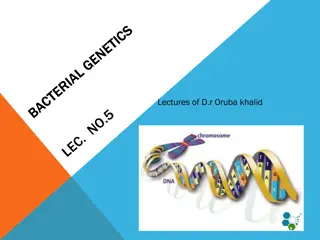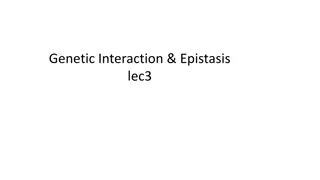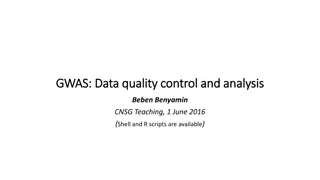Immunoglobulin Genes & Generation of Diversity: Special Genetic Mechanisms
Special genetic mechanisms drive the diversity of immunoglobulin molecules through somatic recombination, enabling a vast array of antibody specificities. B-cell differentiation involves complex DNA rearrangements to create functional V-genes. Class switching allows for the production of antibodies of different classes in response to antigenic stimulation. B-cell receptors, including IgM and IgD, play crucial roles in immune response activation. The interplay of various proteins and receptors like CD3 and T-cell receptors contributes to effective immune function.
Download Presentation

Please find below an Image/Link to download the presentation.
The content on the website is provided AS IS for your information and personal use only. It may not be sold, licensed, or shared on other websites without obtaining consent from the author.If you encounter any issues during the download, it is possible that the publisher has removed the file from their server.
You are allowed to download the files provided on this website for personal or commercial use, subject to the condition that they are used lawfully. All files are the property of their respective owners.
The content on the website is provided AS IS for your information and personal use only. It may not be sold, licensed, or shared on other websites without obtaining consent from the author.
E N D
Presentation Transcript
Immunoglobulin Genes & Generation of Diversity Special genetic mechanisms have evolved to produce the very large number of Ig molecules that develop in the host in response to Agic stimulation without requiring excessive number of genes .Thus, Ig. Genes undergo somatic recombination to produce the enormous diversity of Ab specificities. During B cell differentiation, the DNA is rearranged to bring the selected gene segments adjacent to each other in the genome, a copmlex of enzymeV(D)J recombinases that mediate somatic recombination of Ig gene segment.The gene products of recombination -activating genes-1 and 2(RIG-1 and RIG-2) are lymphocyte- specific enzymes essential for VDJ recombination The V region of each L chain is encoded by two gene segments: V and J. The V region of each H chain is encoded by three gene segments: V, D, and J. The segments are united into one functional V- variable gene by DNA rearrangement . Each assembled V gene is then transcribed with the appropriate C-constant gene to produce a mRNA that encodes for the complete peptide chain .
Immunoglobulin Class switching matched to an Ag carry IgM specific for the Ag and produce IgM in response to this exposure to Ag. Later, gene rearrangement permits elaboration of Abs of the same Agic specificity but of different Ig classes . Class switching is depent on cytokines released from T cells. Initially all B cells
B-Cell receptors IgM : B-cells express a form of IgM that is located on the cell surface ,has the same Ag specificity as the secreted IgM Ab molecule. IgD : Later in development of the B-cell, regulation of RNA processing allows expression of membrane-bound form of IgD. Ig ,Ig : They can transduce signals subsequent to Ag binding by interacting with tyrosine kinase molecules. These signals results in biochemical events, eventually leading to cell activation.
The membrane Ig is associated with the disulfide-linked heterodimer Ig /Ig , forming the BCR (B-cell receptor ). Each chain has a cytoplasmic tail which contain an immunoreceptor tyrosine-based activation motif (ITAM) . B-cell Coreceptor complex : [T-independent Ag] CD19, CD21, and CD81 ,provide activation signal. CD22, provide a negative signal . [T-dependent Ag] CD40, provide a 2ndsignal of activation .
T-Cell receptors TCR : Is a transmembrane heterodimeric protein composed of two disulfide- linked chains . There are two different classes of T-cell receptors : 1. TCR , 2. -expressing class of TCR TCR proteins have variable and constant regions similar to Abs.
CD3 : The TCR chains are noncovalently associated with six other polypeptide chains that make up the CD3 complex. They are responsible for transducing the signal received by the TCR on recognition of Ag to the inside of the cell . CD4 and CD8 : They are differentiate the two major functional classes of T- cell function as co-receptor molecules or the T-cell surface .
Co-stimulatory receptor CD28 :first activation signal . CD152: Negative signal .
